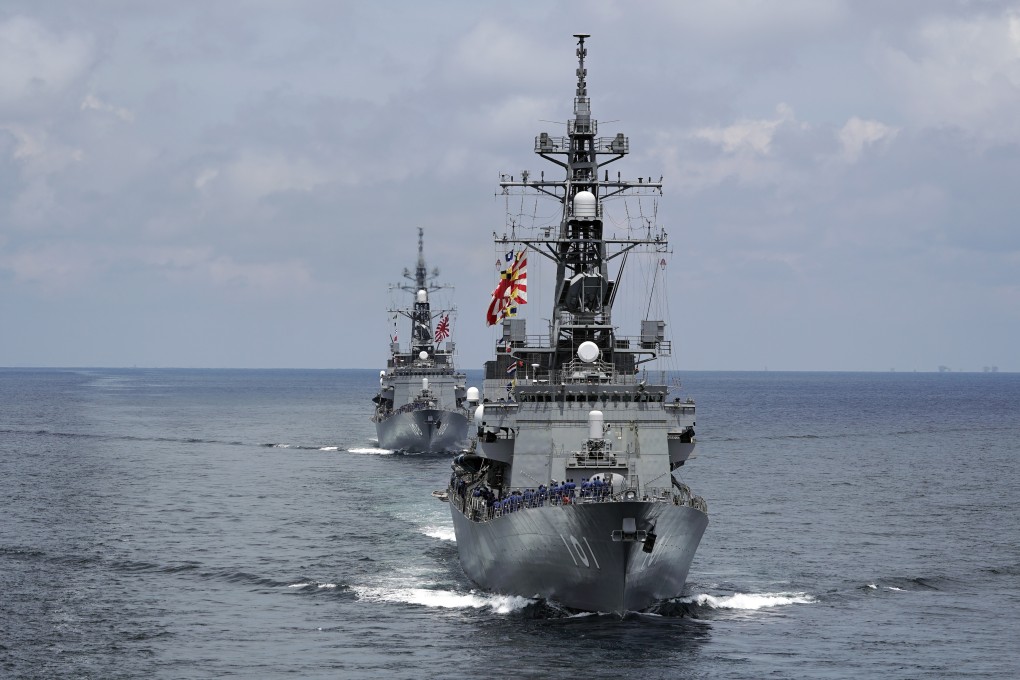Advertisement
Japan flexes its military muscle on edge of South China Sea with joint naval drills involving warships, marines
- Prime Minister Shinzo Abe has long sought to strengthen the country’s military might by amending its pacifist constitution
- The drills with the US and other countries come at a time of prolonged tensions over China’s sweeping territorial claims
Reading Time:3 minutes
Why you can trust SCMP

One of Japan’s largest warships, the helicopter carrier Izumo, offers a glimpse of where its military is headed: for the first time, troops from a newly formed amphibious brigade of Japan’s army took part in an extended naval deployment.
Advertisement
The Izumo left Subic, a former US naval base in the Philippines, at the end of a two-month deployment in the Indo-Pacific region at a time of prolonged tensions involving China’s sweeping territorial claims in and around the South China Sea. The carrier, along with the destroyers Murasame and Akebono, just finished a series of drills with the United States and other countries.

Japan’s ability to project military power beyond its borders is severely constrained by the commitment to pacifism and rejection of use of military force in conflict enshrined in its post-World War II constitution, though in 2015 it was reinterpreted to allow the use of force in defending itself and its allies.
Prime Minister Shinzo Abe has made amending the constitution to allow the military greater leeway one of his lifetime goals. President Donald Trump has sought to help that cause, calling repeatedly for Japan to do more to defend itself under its alliance with the US
Advertisement
In May, Japan conducted its first quadrilateral exercise with France, the US and Australia in the Bay of Bengal. France deployed its flagship nuclear-powered aircraft carrier, the FS Charles de Gaulle, while the United States sent a missile destroyer, the William P Lawrence. Other drills have included Canada, India, Malaysia, Vietnam, Brunei and the Philippines.

Advertisement